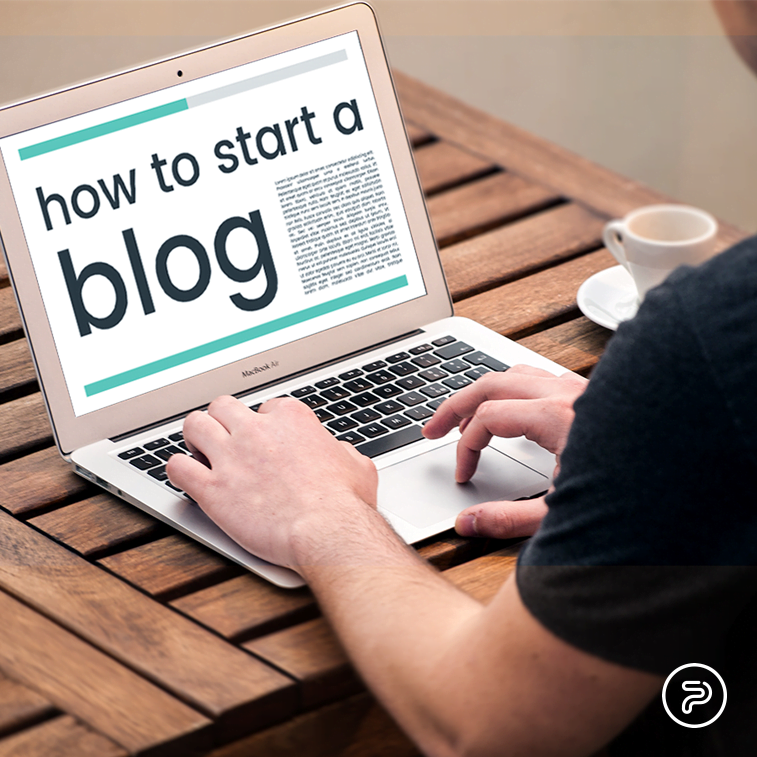Today, having a website or an online business has become unimaginable without a blog. No matter if you do it for the traffic, to sell products, to show-off your projects, or simply as a means of presenting your talent or skills – starting a blog is always a smart decision.
However, many people think that all it takes for one to start a blog is to be a writer. If you are an English major (or majored in writing in general), you will have to learn some more technical things in the process.
So, let us see how you can start a blog in our 7-step guide to blogging.
7 Steps to Blogging for the First Time
1. What to blog about?
It all starts with an idea. You need to know what you want to write about. This, of course, means having a skill or some knowledge in the first place. If you are a designer, an illustrator, a photographer, Photoshop artist, or you simply like doodling wherever you are, you can write a blog about how you started learning these things, and then even expand on writing tutorials or giving (free) classes.
On the other hand, if you already have a web-based business, for example, you own an online jewelry shop or you create wooden household decorations – you can blog about this as well.
So the main point is to know what you want to blog about and build a story around it.
2. Where to blog?
The next step is the platform. If you are only a beginner with restricted assets, you can go with a free blog on some famous platforms such as Blogspot, Blogger, WordPress, Tumblr, Wix, Medium, and Weebly, only to name a few. These can serve as a great springboard and you can even adjoin them to your website in the future.
On the other hand, if you already have a website or a web shop, all you need to do is to call for a blog option in it. Luckily for you, all major platforms already have integrated blogs as a section in their content management systems, so you can start a blog in almost no time. Since WordPress is the most widely used CMS in the world, due to a number of advantages it has, we suggest having your blog on it as well.
3. Set goals
After having the ‘what’ and the ‘where’ you need to determine the ‘why.’ Why are you starting your blog? What will be the point of having all those blog posts on the Internet?
Now, many people write a blog for intrinsic reasons, that is, they feel the need to write and publish online, so this comes as the most logical thing to do. However, if you already have a business, your ultimate goal can be to get to know your target group and get closer to them by solving problems they already have. Sure, the increase in sales and gaining popularity can be a great boost, but if your content is not useful – the odds are that all your hard work will not be recognized.
So, take a piece of paper and write down what you plan to achieve with your blog. Be it in six months, a year, or even five years – you simply need to make something to lead you all the way.
4. Blog design
Since your blog is going to be online, this means that you need to start thinking about web design. If you are already a designer and know the latest web design trends, this will not be an obstacle.
You can always start with some basic or premium themes, which you can adjust according to your needs and will save you a lot of trouble.
However, if you are not a web designer and plan to make a big blog – you will probably need to hire someone to do the blog design for you.
5. Responsive design
You have probably heard about this a lot in the past decade. Indeed, responsive design has become a standard in web design and many people think that it is something that comes gratis. The truth is that many free blogging platforms still do not have enough assets to make their blogs responsive to all mobile devices, so you are probably going to have a web developer to do this for you.
Just think of the frustration you feel when you cannot see a website normally on your mobile phone. Your blog visitors will feel the same when they read your stories. In the end, it will be clear to you that this investment will certainly pay off.
6. Some SEO
Search engine optimization is another thing that is usually implied in web and blog design. However, some say that it changes constantly, so you are probably going to have to be up to date and learn about the newest Google’s algorithm updates if you plan to see your blog first in the SERP. Just follow this SEO checklist for new sites and you will be good to go.
7. Promotion
And the last, but not the least, is blog promotion. If nobody reads your blog, you will not be able to achieve your goals. And promotion brings traffic and visits. It is suggested that you start thinking about social media marketing and bring your posts closer to your preferred audience.
For example, depending on the area of interest and the topic of your blog posts, you can register on Facebook, Pinterest, Google+, Twitter, Linkedin, and other major social networking sites to promote your content.
Wrapping things up
Of course, this is not all. Writing a blog demands a lot of work and inspiration (which you may be out of at a certain point in the future), and this is completely normal. The more you learn about the blogosphere, the better the influence it will have on you and on what you do. We wish you all the luck in the world in starting to write your first blog!





